Search results for ''Murachs MySQL My Guitar Shop Database'
-
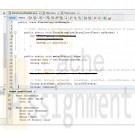
PRG/421 Week 3 Java 3.21 LAB: Plant information (ArrayList)
Regular Price: $6.00
Special Price $3.00
PRG/421 Week 3 Java 3.21 LAB: Plant information (ArrayList)
Given a base Plant class and a derived Flower class, complete main() to create an ArrayList called myGarden. The ArrayList should be able to store objects that belong to the Plant class or the Flower class. Create a method called printArrayList(), that uses the printInfo() methods defined in the respective classes and prints each element in myGarden. The program should read plants or flowers from input (ending with -1), adding each Plant or Flower to the myGarden ArrayList, and output each element in myGarden using the printInfo() method.
Ex. If the input is:
plant Spirea 10
flower Hydrangea 30 false lilac
flower Rose 6 false white
plant Mint 4
-1the output is:
Learn More
Plant Information:
Plant name: Spirea
Cost: 10
Plant Information:
Plant name: Hydrengea
Cost: 30
Annual: false
Color of flowers: lilac
Plant Information:
Plant name: Rose
Cost: 6
Annual: false
Color of flowers: white
Plant Information:
Plant name: Mint
Cost: 4 -
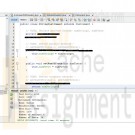
PRG/421 Week 3 Java 3.18 LAB: Instrument information (derived classes)
Regular Price: $6.00
Special Price $3.00
PRG/421 Week 3 Lab 3.18 LAB: Instrument information (derived classes)
Given main() and the Instrument class, define a derived class, String Instrument, for string instruments.
Ex. If the input is:
Drums
Zildjian
2015
2500
Guitar
Gibson
2002
1200
6
19the output is:
Learn More
Instrument Information:
Name: Drums
Manufacturer: Zildjian
Year built: 2015
Cost: 2500
Instrument Information:
Name: Guitar
Manufacturer: Gibson
Year built: 2002
Cost: 1200
Number of strings: 6
Number of frets: 19 -
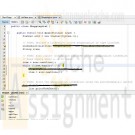
PRG/421 Week 4 Java 4.13 LAB: Grocery shopping list (LinkedList)
Regular Price: $7.00
Special Price $3.00
PRG/421 Week 4 Java 4.13 LAB: Grocery shopping list (LinkedList)
Given a ListItem class, complete the main() using the built-in LinkedList type to create a linked list called shoppingList. The program should read items from input (ending with -1), adding each item to shoppingList, and output each item in shoppingList using the printNodeData() method.
Ex. If the input is
milk
bread
eggs
waffles
cereal
-1the output is
Learn More
milk
bread
eggs
waffles
cereal -
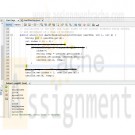
PRG/421 Week 5 Java 5.21 LAB: Sorting user IDs
Regular Price: $7.00
Special Price $3.00
PRG/421 Week 5 Java 5.21 LAB: Sorting user IDs
Given a main() that reads user IDs (until -1), complete the quicksort() and partition() methods to sort the IDs in ascending order using the Quicksort algorithm, and output the sorted IDs one per line.
Ex. If the input is:
kaylasimms
julia
myron1994
kaylajones
-1the output is:
Learn More
julia
kaylajones
kaylasimms
myron1994 -
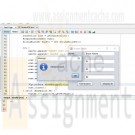
CIS355A Week 6 Lab - Database Connectivity Student Management System
Regular Price: $10.00
Special Price $8.00
CIS355A Week 6 Lab - Database Connectivity Student Management System
OBJECTIVES
• Programmatic access to a MySQL database to add and display records
PROBLEM: Student Management System
A teacher needs the ability to store and retrieve student data. This includes
• student name;
• three test scores;
• average; and
• letter grade.FUNCTIONAL REQUIREMENTS
You can code the GUI by hand or use NetBeans GUI builder interface.
Create a GUI which allows for input and display of student data.
It should include buttons to save a record, display all records.Create a database and table to store student name and three test scores. (Note that average and grade are calculated by app.)
Student class
Create a Student class to manage the student data. It should have private instance variables of
• student name; and
• three test scores.
The class must have the following methods.
• A default and parameterized constructor
• Sets/gets for all instance variables
• A get method to calculate and return the average
• A get method to calculate and return the letter grade
• toString to display the name of the studentStudentDB class
Create a StudentDB class that is used to create a connection and interface with the database.This class should have two methods.
• getAll - reads data from database, returns data in an arraylist of student objects
• add - writes a record to the databaseGUI class
Insert button will take the info from the GUI (student name and three test scores) and insert a record into the table. Input should be cleared from the textboxes.
Display button will read the data from the database and creates a report in Console window, sample format below.
Name Test1 Test2 Test3 Avg Grade
Bruce Wayne 90 95 98 94.3 A
Clark Kent 65 70 90 75.0 CRUBRIC
Student class
• Has all required functionality 10
GUI class
• Student record can be saved
• All student data can be displayed 15
StudentDB class
• add method inserts a record into db.
• get method reads all records and returns in arraylist. 15
Code style 5
Lab Report 10
TOTAL 55CODE STYLE REQUIREMENTS
• Include meaningful comments throughout your code.
• Use meaningful names for variables.
• Code must be properly indented.
• Include a comment header at beginning of each file, example below.
/****************************************************
Program Name: ProgramName.java
Programmer's Name: Student Name
Program Description: Describe here what this program will do
***********************************************************/DELIVERABLES
Submit as a SINGLE zip folder
• all java files; and
• the Lab report.Follow assignment specification regarding class/method names.
Learn More
Note that your Java file name must match class name (DO NOT rename). -
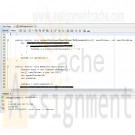
PRG/420 Week 5 Java 5.22 LAB: Output values below an amount - methods
Regular Price: $7.00
Special Price $3.00
PRG/420 Week 5 Java 5.22 LAB: Output values below an amount - methods
Write a program that first gets a list of integers from input. The input begins with an integer indicating the number of integers that follow. Then, get the last value from the input, and output all integers less than or equal to that value. Assume that the list will always contain less than 20 integers.
Ex: If the input is:
5 50 60 140 200 75 100
the output is:
50 60 75The 5 indicates that there are five integers in the list, namely 50, 60, 140, 200, and 75. The 100 indicates that program should output all integers less than or equal to 100, so the program outputs 50, 60, and 75. For coding simplicity, follow every output value by a space, including the last one.
Such functionality is common on sites like Amazon, where a user can filter results. Write your code to define and use two methods:
public static void getUserValues(int[] myArr, int arrSize, Scanner scnr)
public static void outputIntsLessThanOrEqualToThreshold(int[] userValues, int userValsSize, int upperThreshold)Utilizing methods will help to make main() very clean and intuitive.
Learn More
Note: This is a lab from a previous chapter that now requires the use of methods. -
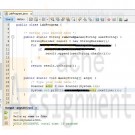
PRG/420 Week 5 Java 5.19 LAB: Remove spaces - methods
Regular Price: $7.00
Special Price $3.00
PRG/420 Week 5 Java 5.19 LAB: Remove spaces - methods
Write a program that removes all spaces from the given input.
Ex: If the input is:
Hello my name is John.
the output is:
HellomynameisJohn.Your program must define and call the following method. The method should return a string representing the input string without spaces.
public static String removeSpaces(String userString)Note: This is a lab from a previous chapter that now requires the use of a method.
Learn More -
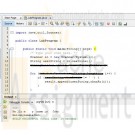
PRG/420 Week 3 Java 3.14 LAB: Remove spaces
Regular Price: $7.00
Special Price $3.00
PRG/420 Week 3 Java 3.14 LAB: Remove spaces
Write a program that removes all spaces from the given input.
Ex: If the input is:
Hello my name is John.the output is:
Learn More
HellomynameisJohn. -

PRG/420 Week 2 Java 2.18 LAB: Warm up: Text message abbreviation decoder
Regular Price: $7.00
Special Price $3.00
PRG/420 Week 2 Java 2.18 LAB: Warm up: Text message abbreviation decoder
(1) If a user's input string matches a known text message abbreviation, output the unabbreviated form, else output: Unknown. Support two abbreviations: LOL -- laughing out loud, and IDK -- I don't know. (4 pts)
Sample input/output:
Input an abbreviation:
LOL
laughing out loud(2) Expand to also decode these abbreviations. (3 pts)
Learn More
BFF -- best friends forever
IMHO -- in my humble opinion
TMI -- too much information -
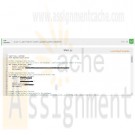
DAT/210 Week 5 Python 6.23: Python insert/update sqlite3 datafiles
Regular Price: $10.00
Special Price $4.00
DAT/210 Week 5 Python 6.23: Python insert/update sqlite3 datafiles
Given is a Python program that connects to a sqlite database and has one table called writers with two columns:
• name - the name of a writer
• num - the number of works the writer has writtenThe writers table originally has the following data
name, num
Jane Austen,6
Charles Dickens,20
Ernest Hemingway,9
Jack Kerouac,22
F. Scott Fitzgerald,8
Mary Shelley,7
Charlotte Bronte,5
Mark Twain,11
Agatha Christie,73
Ian Flemming,14
J.K. Rowling,14
Stephen King,54
Oscar Wilde,1
Update the Python program to ask the user if they want to update entries or add new entries. If the name entered already exists in the writers table then the database record is updated, overwriting the original contents. If the name does not exist in the writers table, then add a new record with the writers name and number of works. The following TODO sections must be completed.
• Check if a writer exists in the writers table
• If the writer exists in the table, locate an entry to be updated by writers name and update the writer's value for num
• If the writer does not exist in the table, add a new entry in the writers table and provide the value for name and numEx if the input is:
Learn More
y
J.K. Rowling
30
y
Elton John
y
62
n
The output is:
(ID, Name, Num)
(1, 'Jane Austen', 6)
(2, 'Charles Dickens', 20)
(3, 'Ernest Hemingway', 9)
(4, 'Jack Kerouac', 22)
(5, 'F. Scott Fitzgerald', 8)
(6, 'Mary Shelley', 7)
(7, 'Charlotte Bronte', 5)
(8, 'Mark Twain', 11)
(9, 'Agatha Christie', 73)
(10, 'Ian Flemming', 14)
(11, 'J.K. Rowling', 30)
(12, 'Stephen King', 54)
(13, 'Oscar Wilde', 1)
(14, 'Elton John', 62)





